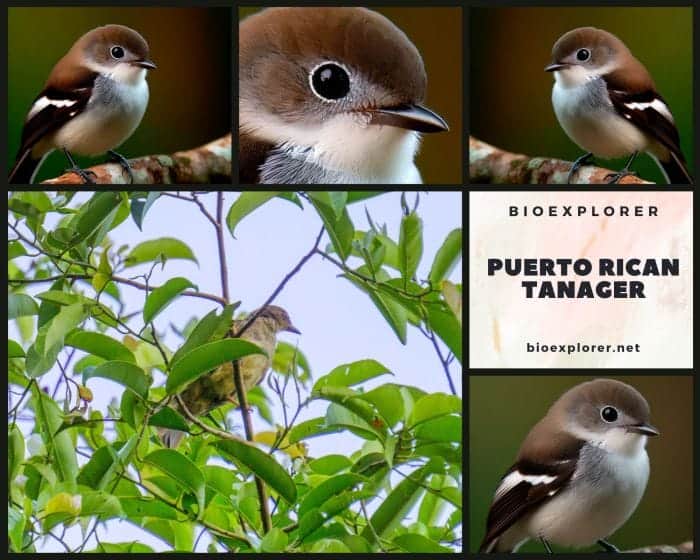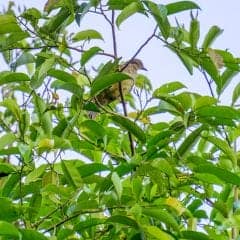
| Animalia | Passeriformes | Nesospingidae | Nesospingus | Nesospingus speculiferus |
The Puerto Rican Tanager (Nesospingus speculiferus) is an olive-brown 18-20 cm insectivorous songbird restricted to mountain rainforests across Puerto Rico.


- Common Name(s): Puerto Rican Tanager, Llorosa
- Family: Fringillidae
- Body Dimensions: 18–20 cm
- Male Plumage Color(s): Olive-Brown With Gray-White Underparts
- Female Plumage Color(s): Olive-Brown With Gray-White Underparts
- Habitat: Rainforests
- Diet: Fruit, Insects, Frogs, Lizards
- Native Countries: Puerto Rico
- Continent(s): North America
- Taxonomy Classification Year: 1875
- Taxonomist(s): George Newbold Lawrence
Puerto Rican Tanager Fun Facts
- Nicknamed “the cryer” for its distinctive vocalizations, these endemic sports a white-streaked breast and bold white wing patches.
- Often leading mixed flocks foraging through the canopy, the Puerto Rican Tanager supplements its diet of spiders and insects with various forest fruits.
- Breeding January-July, territorial pairs construct intricate cup nests lined with feathers and palm fibers placed high in branches. Typical clutch size numbers just 2-3 elliptical cream-colored eggs swirled in russet.
- Threats from native owl predators and habitat loss constrict remaining populations to fragments along the central Cordillera mountains.
- Once more widespread through shady broadleaf mid-elevation forests, logging, and agriculture largely erased lower population strongholds.
- The Puerto Rican Tanager now only endures in protected preserves like Maricao State Forest and higher peaks offering sanctuary. However, even these habitats stand jeopardized by climate change and encroaching human infrastructure as conditions warm[1].
- Listed[2] as Vulnerable with an ongoing population decline, the Puerto Rican Tanager’s limited range and specialized needs underscore the importance of maintaining humidity and tree cover through intact corridors –the keys to this species’ survival.
Protecting precious montane cloud forest refuges to shelter the crying tanager remains Puerto Rico’s solemn responsibility as steward of such exceptionally rare endemic birds.
Suggested Reading: Common Birds In Puerto Rico
Cite This Page
APA7MLA8Chicago
BioExplorer.net. (2025, October 31). Puerto Rican Tanager. Bio Explorer. https://www.bioexplorer.net/animals/birds/puerto-rican-tanager/.
BioExplorer.net. "Puerto Rican Tanager" Bio Explorer, 31 October 2025, https://www.bioexplorer.net/animals/birds/puerto-rican-tanager/.
BioExplorer.net. "Puerto Rican Tanager" Bio Explorer, October 31 2025. https://www.bioexplorer.net/animals/birds/puerto-rican-tanager/.











